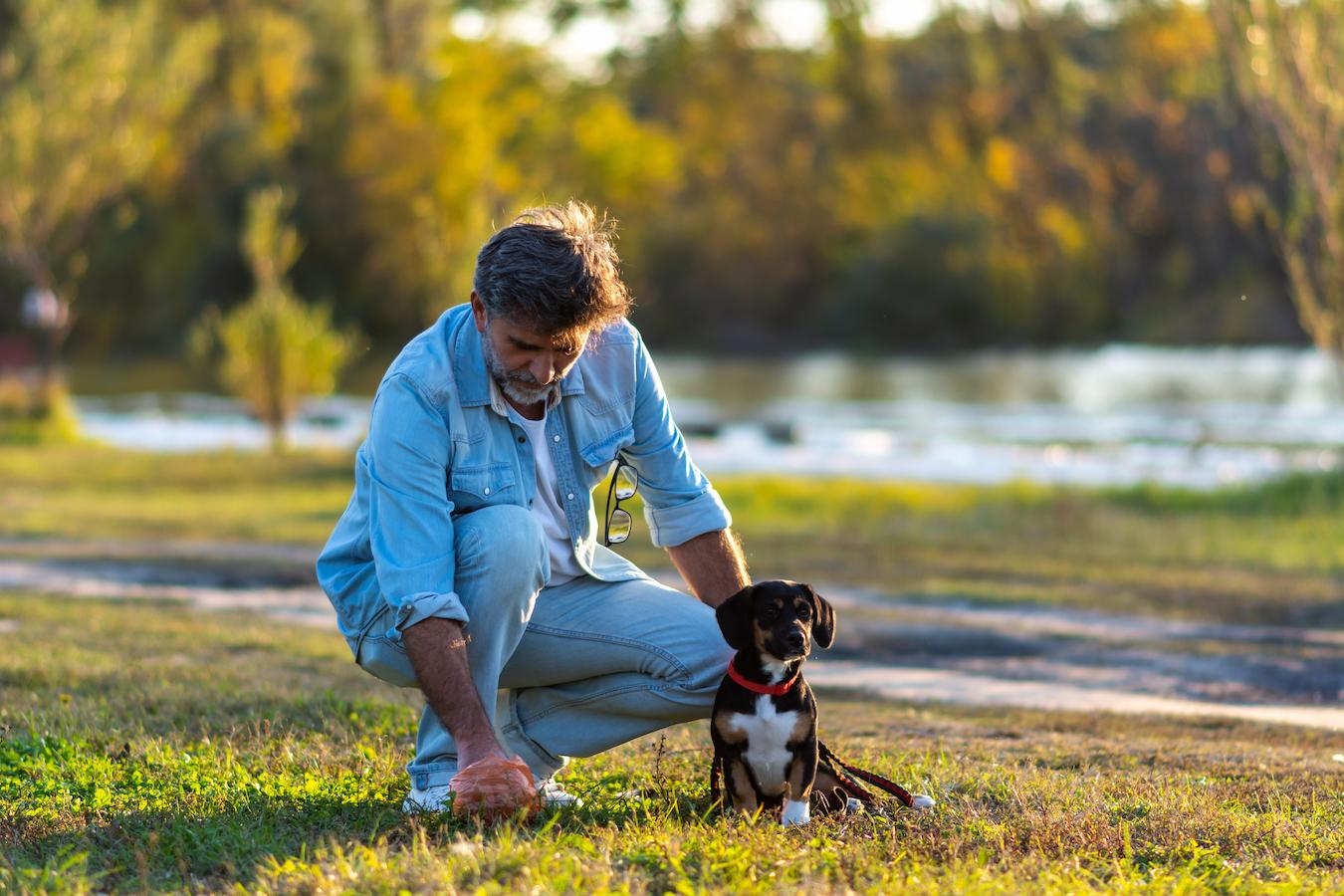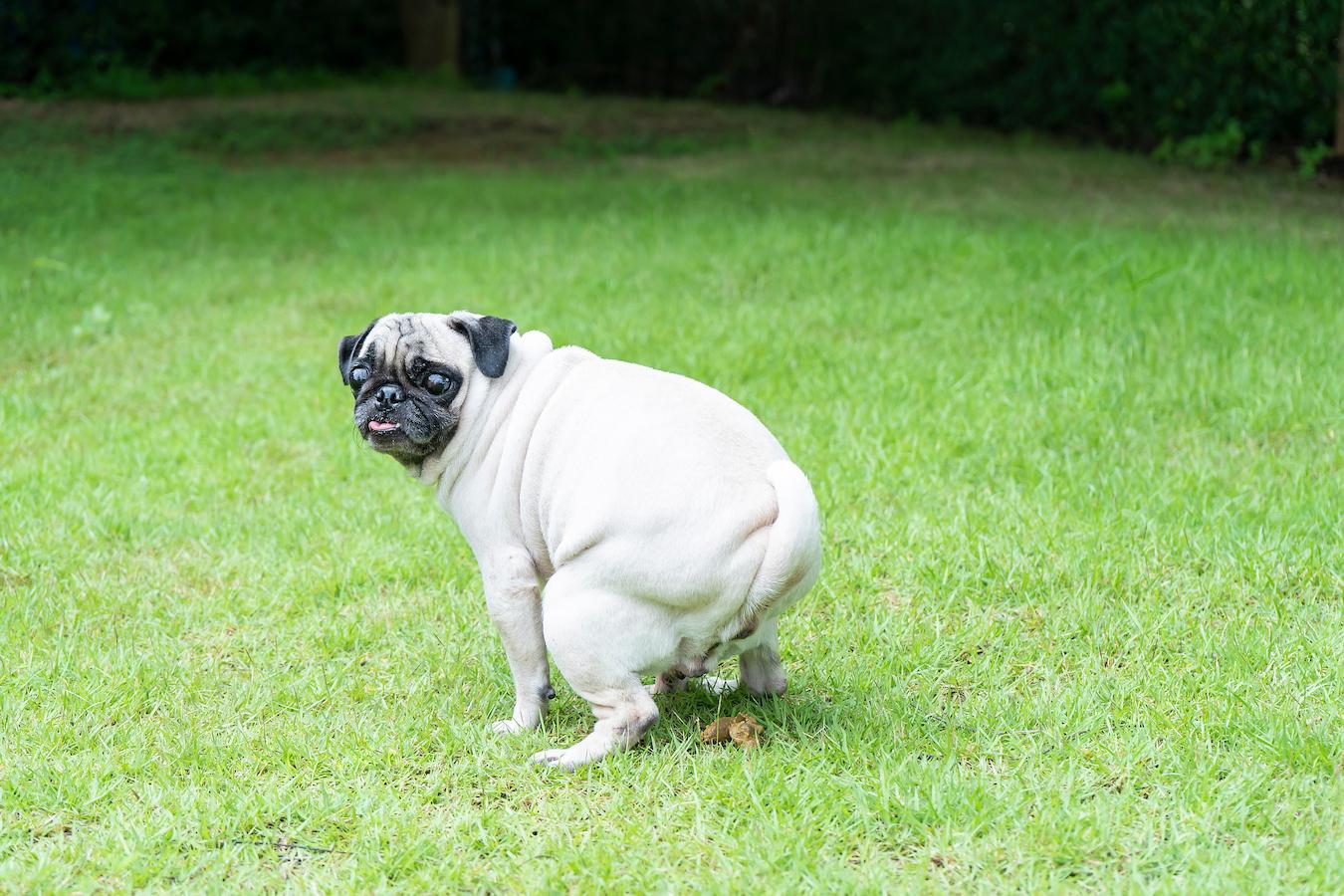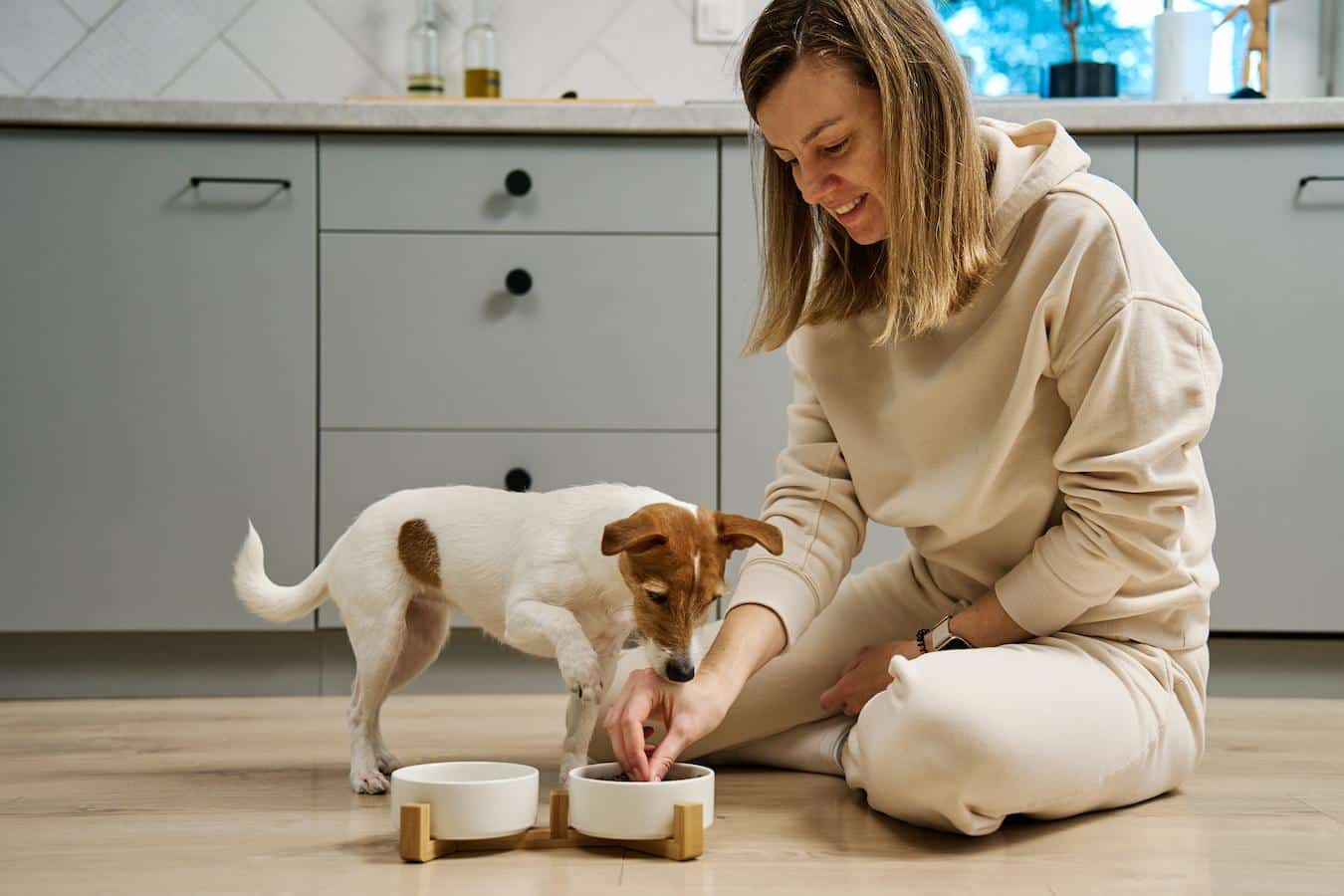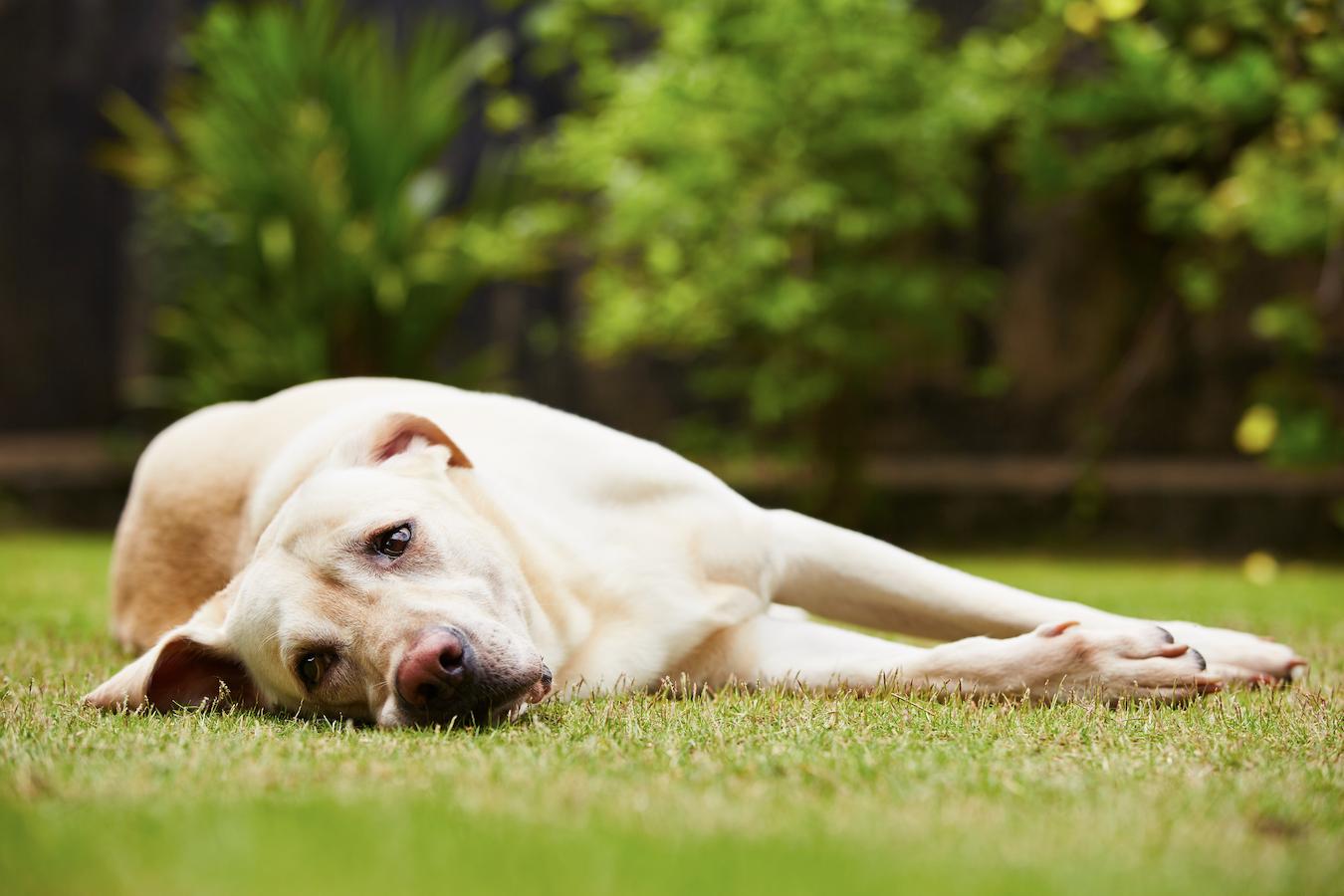Is your dog’s poop a little too loose for your liking? Occasional watery stools can be difficult to clean at best. Persistent watery stools may even indicate an underlying health concern.
Luckily, there are a few ways to firm up your dog’s poop. Keep reading to learn more!
Key Takeaways
- Normal and healthy dog poop will be chocolate brown and somewhat firm. It should not have a film or coating and should be the same inside and outside.
- Diarrhea or soft stools can be caused by food intolerance, dietary indiscretion, chronic stress, or infections.
- To help firm up your dog’s doo, you should increase water intake, replace electrolytes, temporarily fast, and introduce a bland diet.
See Related: Why Do Dogs Roll In Poop (& Other Stinky Things)?)
What Should Your Dog’s Poop Look Like?
Compared to humans, your dog’s digestive system is far shorter – in fact, dogs can digest meals in one-third of the time it takes humans to digest meals. Dogs also have different digestive enzymes in their stomachs and saliva that allow them to consume and digest foods that humans cannot.
The digestive system has a few key responsibilities, including processing food, absorbing nutrients, and disposing of waste. The gastrointestinal tract plays a fundamental role in overall health, which means that bowel movements can be an excellent indicator of digestive health.
What should your dog’s doo look like on a normal day? While this isn’t the most pleasing picture, it’s important to understand what healthy dog poop looks like. That way, you can easily identify if your furry friend has abnormal stool or digestive issues.
We can break it down using the four C’s: content, color, consistency, and coating.
Content
What is inside your dog’s poo?
When picking up your dog’s poop, you may need to take a closer look. As gross and repulsive as it may be, you may need to dig around to look at what’s inside your dog’s poop.
The inside should look the same as the outside. However, this isn’t always the case.
If your four-legged friend has a parasitic infection, you may see worms. Roundworms are long and skinny, while tapeworms leave behind rice-like sacs.
You may also see signs of pica, a common condition where dogs eat objects that are not food items. Maybe you’ll discover plastic, sock pieces, or rocks.
You may see lots of fur, which is a sign of overgrooming in the case of allergies, boredom, or skin disease.
You can learn a lot about your canine companion by peering into their poop. This is a great way to discover why their bowel movements are watery or loose (and how to fix it!)
Color
What color is your dog’s poo?
Normal dog poop is a chocolate brown color. This color may vary slightly from time to time, but it’s best to look out for consistent abnormalities such as:
- Black or tar-like stools, which can indicate bleeding in the upper digestive tract.
- Red streaks in the stool, which can indicate bleeding in the lower digestive tract.
- Gray or yellow stools, which can indicate health issues like the pancreas, liver disease, or gallbladder.
Consistency
How firm or watery is your dog’s poo?
If you take your furry friend to the vet, the veterinarian will use a numerical score from one to seven to evaluate the stool consistency. One is rock-hard, which is not normal. Seven is a watery puddle, which is also not normal.
The ideal consistency of dog poop is a two, which means it is firm, segmented, and caterpillar-shaped. It will feel like Play-Doh if you press gently, and it easily holds its shape.
Watery or loose stools can indicate that the large intestines are not reabsorbing water how they should. Hard stools can indicate dehydration or other underlying health issues.
Coating
Is there any coating or film on your dog’s poo?
Your four-legged friend’s poops should not have any coating or film over it. Their poop shouldn’t leave a trail behind when you pick their chocolatey surprise from the grass. If their poop does have a coating or film of mucous, it could indicate an inflammation of the large intestines.
What Causes Diarrhea and Soft Stools in Dogs?
Diarrhea and soft stools are not the same, though the names are often used interchangeably. However, both can be an indicator of underlying health concerns or digestive issues.
Diarrhea is very runny and difficult to clean up. Loose or watery stools over the course of three days can be considered diarrhea. If this is the case, you should call your veterinarian for expert advice.
Soft stools are somewhat formed and easily disposable.
There are several reasons why your canine companion may have diarrhea:
- Infections, like bacterial infections, viral infections, or parasitic infections.
- Inflammatory bowel disease.
- Dietary indiscretion, which can occur when dogs eat table scraps, non-food items, or garbage.
- Weak immune system.
- Food intolerances.
- Medications that may affect the balance of good bacteria in your pet’s gut.
- Chronic stress, as stress colitis is one of the most common causes of diarrhea in dogs.
Soft stools usually occur due to nutritional deficiencies or dietary insufficiencies. A diet lacking in protein or fiber can cause loose stools. Food intolerances or chronic stress can also lead to soft stools.
Diarrhea or soft stools in dogs can lead to further health issues down the road. Frequent or consistent loose stools or diarrhea can lead to metabolic imbalances or dehydration.
As gross as it may be, you’ll need to keep a close eye on the bowel movements of your four-legged friend. Their poop can give you valuable insight into their digestive health and overall health.
Bonus: How To Make Your Dog Laugh
4 Ways To Firm Up Your Dog’s Stool
Your relaxing and enjoyable walks in the park shouldn’t be plagued by watery and runny stools.
Though you can entrust the professional to pick up your dog’s doo for you, it’s a good idea to help firm up their bowel movements. That’s because soft stools or diarrhea can often be a sign of an underlying health issue or dietary imbalance.
So, discovering the cause of their abnormal poops will help them get back to top-notch shape! Here are four little-known ways to firm up your dog’s doo. (Be sure to consult with your veterinarian before doing any of the following.)
#1. Water Intake
Your dog’s diet plays a key role in the consistency and color of their poops. However, many pet parents make the mistake of assuming that their dog food is the sole culprit.
A major part of the dog’s diet is water. Just like with humans, your furry friend relies on water to stay healthy. Water ensures that the digestive system and intestines can function properly. Water also plays a vital role in binding fiber to the gut, which encourages firm and shapely stool.
On top of that, soft stools and diarrhea cause waste to move through the intestinal tract quickly. This can lead to dehydration since the large intestine cannot resorb water as efficiently or easily.
Increasing the water intake of your canine companion will keep them hydrated and healthy while firming up their stool. One way to do so is by feeding them canned food instead of dry kibble.
#2. Electrolyte Replacement
As previously mentioned, soft stools and diarrhea can lead to dehydration. This can disrupt the electrolyte balance of your four-legged friend’s digestive system. It may be beneficial to give them an over-the-counter oral rehydration solution.
Be sure to consult with your veterinarian before giving your dog over-the-counter oral rehydration solutions.
#3. Fasting
Water and food are often the cause of loose stools or watery diarrhea. Most of the time, runny poop is the result of a digestive upset. Anything from table scraps to dry kibble may disagree with your furry friend’s stomach and lead to loose stools or diarrhea.
Acute diarrhea or runny stool can often be remedied with a short period of fasting. Fasting for 12 to 24 hours gives your dog’s gut time to calm down. Be sure to give them access to fresh water unless directed otherwise by your veterinarian.
This is especially beneficial if the cause of your dog’s loose stools is garbage consumption, food intolerance, or an imbalanced diet. It’s important to remove access to the food or non-food items that are causing dog diarrhea.
After a short period of fasting, slowly reintroduce food and observe for signs of stomach upset. It’s best to feed them a bland diet consisting of pumpkin puree or wet food.
#4. Bland Diet & High-Quality Foods
What goes in must come out! Your dog’s bowel movements are largely affected by their diet. Food intolerances or garbage consumption can often lead to watery stools or diarrhea. So, to firm up their poop, it’s a good idea to reevaluate and restructure their diet.
A bland diet will support healthy digestion and reduce stomach upset. Many times, the cause of loose stool or diarrhea is dry kibble or processed foods. Offering natural ingredients and milder foods will be very beneficial.
The best foods to feed your furry friend on a bland diet will be boiled chicken, plain rice, bananas, or pumpkin puree. A balanced diet consisting of high-protein and high-fiber foods is key to healthy bowel movements and better digestive health.
Here are some other things to keep in mind:
- Increase their fiber intake with fiber supplements and encourage a high-protein diet.
- Don’t feed them pumpkin pie filling, as this usually contains other ingredients and preservatives.
- Avoid dairy, as many dogs cannot easily or properly digest lactose.
- Avoid fatty foods, as this can lead to medical issues such as pancreatitis.
- Pick foods that have transparent nutritional labels and natural ingredients and lack preservatives.
- Give your dog probiotic supplements that encourage the presence of beneficial bacteria in the gut.
- Always watch after your dog to make sure they don’t eat non-food items.
Final Thoughts
Watery poops can give your incredible insight into your dog’s digestive health. Though it may be quite gross, be sure to keep an eye on your dog’s bowel movements!
(As always, before changing your dog’s diet or giving your dog medications, consult with your veterinarian. If you suspect that infections or medical issues are the cause of your four-legged friend’s loose stool, consult with your veterinarian as well.)
Keep Reading: Dog Feeding Chart: How Much Should I Feed My Dog?
—
Scoop Masters offers professional dog waste removal services in California, Texas, Florida, and Tennessee. Since 1988, we’ve saved dog owners across the country from the overly unpleasant task of picking up after their pets. Each poopy project we complete gives them the freedom, convenience, and sanitation they deserve! Contact us for a free quote, or simply stock up on enough dog poop bags to keep your pet’s number twos at bay. To stay in the loop, follow up on Facebook and Twitter/X. If your dog can poop it, we can scoop it!






Trackbacks/Pingbacks